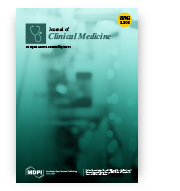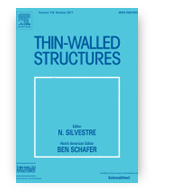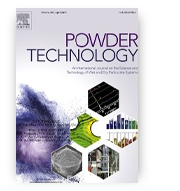SARS-CoV-2—Morphology, Transmission and Diagnosis during Pandemic, Review with Element of Meta-Analysis
Katarzyna Grudlewska-Buda, Natalia Wiktorczyk-Kapischke, Ewa Wałecka-Zacharska, Joanna Kwiecińska-Piróg, Katarzyna Buszko, Kamil Leis, Klaudia Juszczuk, Eugenia Gospodarek-Komkowska, Krzysztof Skowron
Journal of Clinical Medicine
 The outbreak of Coronavirus disease 2019 (COVID-19) is caused by severe acute respiratory syndrome (SARS) coronavirus 2 (SARS-CoV-2). Thus far, the virus has killed over 2,782,112 people and infected over 126,842,694 in the world (state 27 March 2021), resulting in a pandemic for humans. Based on the present data, SARS-CoV-2 transmission from animals to humans cannot be excluded. If mutations allowing breaking of the species barrier and enhancing transmissibility occurred, next changes in the SARS-CoV-2 genome, leading to easier spreading and greater pathogenicity, could happen. The environment and saliva might play an important role in virus transmission. Therefore, there is a need for strict regimes in terms of personal hygiene, including hand washing and surface disinfection. The presence of viral RNA is not an equivalent of active viral infection. The positive result of the RT-PCR method may represent either viral residues or infectious virus particles. RNA-based tests should not be used in patients after the decline of disease symptoms to confirm convalescence. It has been proposed to use the test based on viral, sub-genomic mRNA, or serological methods to find the immune response to infection. Vertical transmission of SARS-CoV-2 is still a little-known issue. In our review, we have prepared a meta-analysis of the transmission of SARS-CoV-2 from mother to child depending on the type of delivery. Our study indicated that the transmission of the virus from mother to child is rare, and the infection rate is not higher in the case of natural childbirth, breastfeeding, or contact with the mother. We hope that this review and meta-analysis will help to systemize knowledge about SARS-CoV-2 with an emphasis on diagnostic implications and transmission routes, in particular, mother-to-child transmission.
The outbreak of Coronavirus disease 2019 (COVID-19) is caused by severe acute respiratory syndrome (SARS) coronavirus 2 (SARS-CoV-2). Thus far, the virus has killed over 2,782,112 people and infected over 126,842,694 in the world (state 27 March 2021), resulting in a pandemic for humans. Based on the present data, SARS-CoV-2 transmission from animals to humans cannot be excluded. If mutations allowing breaking of the species barrier and enhancing transmissibility occurred, next changes in the SARS-CoV-2 genome, leading to easier spreading and greater pathogenicity, could happen. The environment and saliva might play an important role in virus transmission. Therefore, there is a need for strict regimes in terms of personal hygiene, including hand washing and surface disinfection. The presence of viral RNA is not an equivalent of active viral infection. The positive result of the RT-PCR method may represent either viral residues or infectious virus particles. RNA-based tests should not be used in patients after the decline of disease symptoms to confirm convalescence. It has been proposed to use the test based on viral, sub-genomic mRNA, or serological methods to find the immune response to infection. Vertical transmission of SARS-CoV-2 is still a little-known issue. In our review, we have prepared a meta-analysis of the transmission of SARS-CoV-2 from mother to child depending on the type of delivery. Our study indicated that the transmission of the virus from mother to child is rare, and the infection rate is not higher in the case of natural childbirth, breastfeeding, or contact with the mother. We hope that this review and meta-analysis will help to systemize knowledge about SARS-CoV-2 with an emphasis on diagnostic implications and transmission routes, in particular, mother-to-child transmission.
10.3390/jcm10091962
Experimental and numerical research of the lateral buckling problem for steel two-chord columns with a single lacing plane
Paweł Lorkowski, Bronisław Gosowski
Thin-Walled Structures
 The paper presents the results of experimental testing on specimens and numerical analysis aimed at determining the load-bearing capacity and the critical moment of elastic lateral-torsional buckling of bent two-chord steel columns with a single lacing plane, located in the symmetrical axis of their cross-section. Uses of such built-up members include columns in industrial halls. Experimental tests were carried out on approximately 1:2 scale models, supported by single-span forks with cantilevers, subjected to concentrated forces applied at their ends. In the model tests, the critical resistance to lateral–torsional buckling and the load-bearing capacity were determined for the elements subjected to pure bending. An equivalent bar model was used for numerical analysis using the finite element method supported by ABAQUS software. The results of experimental testing and numerical analysis were found to be well-aligned with one another. The equivalent torsion section constant for the two-chord section analysed was determined by comparing the results of experimental testing to numerical calculations. The results were obtained by solving the appropriate differential equation for lateral–torsional buckling as formulated in Vlasov’s theory. The paper presents conclusions relating to implementation of the results in designing applications.
The paper presents the results of experimental testing on specimens and numerical analysis aimed at determining the load-bearing capacity and the critical moment of elastic lateral-torsional buckling of bent two-chord steel columns with a single lacing plane, located in the symmetrical axis of their cross-section. Uses of such built-up members include columns in industrial halls. Experimental tests were carried out on approximately 1:2 scale models, supported by single-span forks with cantilevers, subjected to concentrated forces applied at their ends. In the model tests, the critical resistance to lateral–torsional buckling and the load-bearing capacity were determined for the elements subjected to pure bending. An equivalent bar model was used for numerical analysis using the finite element method supported by ABAQUS software. The results of experimental testing and numerical analysis were found to be well-aligned with one another. The equivalent torsion section constant for the two-chord section analysed was determined by comparing the results of experimental testing to numerical calculations. The results were obtained by solving the appropriate differential equation for lateral–torsional buckling as formulated in Vlasov’s theory. The paper presents conclusions relating to implementation of the results in designing applications.
10.1016/j.tws.2021.107897
Do we have to use suspensions with low concentrations in determination of particle size distribution by sedimentation methods? study
Krzysztof Papuga, Jarosław Kaszubkiewicz, Dorota Kawałko
Powder Technology
 The Stokes equation used in the measurement of particle size distribution is based on the assumption that there are no interactions between settling soil particles. This requirement is fulfilled by using a low-concentration suspension. Therefore a highly precise determination of the suspension density is needed and makes that the measurement is sensitive to temperature changes and other random factors. In the presented paper, we attempted to overcome this problem by using increased initial suspension concentrations and at the same time taking into account the mutual interactions of sedimenting particles. The Batchelor equation was used to calculate the hindered settling velocity of the particles. The problem of mutual dependence among the concentration of particles and measurement times for individual fractions was solved by applying a simple iterative procedure. Application of the procedure caused the results obtained with the use of various initial suspension concentrations to become more similar than without it.
The Stokes equation used in the measurement of particle size distribution is based on the assumption that there are no interactions between settling soil particles. This requirement is fulfilled by using a low-concentration suspension. Therefore a highly precise determination of the suspension density is needed and makes that the measurement is sensitive to temperature changes and other random factors. In the presented paper, we attempted to overcome this problem by using increased initial suspension concentrations and at the same time taking into account the mutual interactions of sedimenting particles. The Batchelor equation was used to calculate the hindered settling velocity of the particles. The problem of mutual dependence among the concentration of particles and measurement times for individual fractions was solved by applying a simple iterative procedure. Application of the procedure caused the results obtained with the use of various initial suspension concentrations to become more similar than without it.
10.1016/j.powtec.2021.05.060
Comparative evaluation of the antioxidant, antimicrobial and nutritive properties of gluten-free flours and in silico study
Joanna Miedzianka, Katarzyna Drzymała, Agnieszka Nemś, Agnieszka Kita
Scientific Reports
 Gluten-free flours are interesting alternative to wheat flours. They could be by-products of oilseed processing, characterized by high content of bioactive compounds. Therefore the aim of the study was to determine the antioxidant, antimicrobial properties, amino acid and fatty acid profile of flours obtained as by-products from the oil industry. The highest total polyphenol content and antioxidant activity was found to have evening primrose flour. The widest spectrum of microbial growth inhibition was indicated for corn germ extract which showed no antimicrobial activity only against Bacillus subtilis. The highest protein content was found in pumpkin, peanut and almond flours (more than 50 g/100 g). The major abundant amino acids in all the analysed oilseed cake flours were aspartic acid, glutamic acid and arginine. The analysed gluten-free flours were found to be a good source of polyunsaturated fatty acids (PUFAs), which comprised mainly linoleic acid and α-linolenic acid, whereas the best source of PUFAs was evening primrose flour. The results suggest that the cold-pressed seed flours possess valuable chemical composition and may be considered for improvement of the nutritional properties of food products.
Gluten-free flours are interesting alternative to wheat flours. They could be by-products of oilseed processing, characterized by high content of bioactive compounds. Therefore the aim of the study was to determine the antioxidant, antimicrobial properties, amino acid and fatty acid profile of flours obtained as by-products from the oil industry. The highest total polyphenol content and antioxidant activity was found to have evening primrose flour. The widest spectrum of microbial growth inhibition was indicated for corn germ extract which showed no antimicrobial activity only against Bacillus subtilis. The highest protein content was found in pumpkin, peanut and almond flours (more than 50 g/100 g). The major abundant amino acids in all the analysed oilseed cake flours were aspartic acid, glutamic acid and arginine. The analysed gluten-free flours were found to be a good source of polyunsaturated fatty acids (PUFAs), which comprised mainly linoleic acid and α-linolenic acid, whereas the best source of PUFAs was evening primrose flour. The results suggest that the cold-pressed seed flours possess valuable chemical composition and may be considered for improvement of the nutritional properties of food products.
10.1038/s41598-021-89845-6









